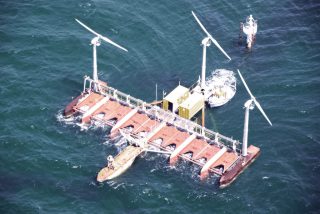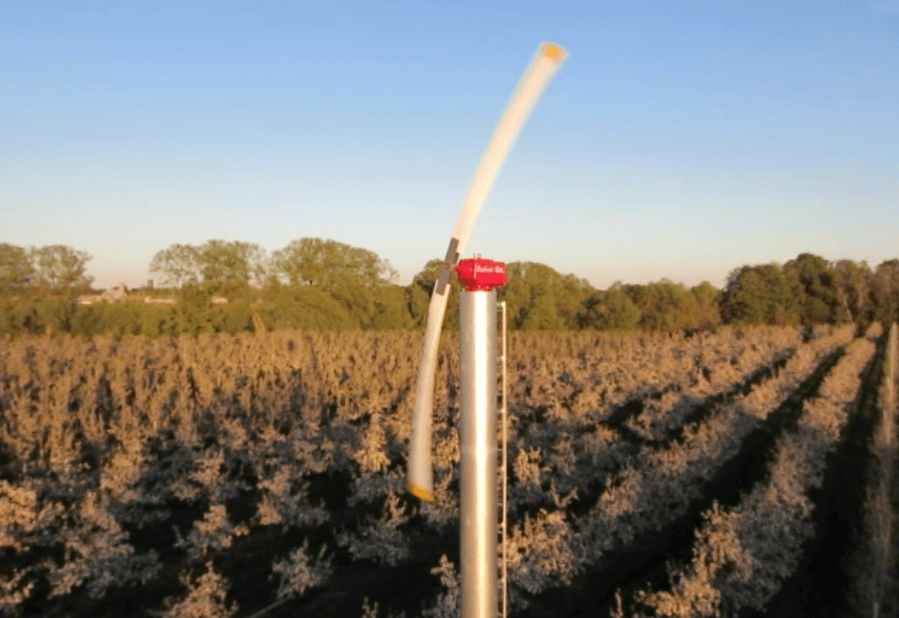Cost-Effective Renewable Energy Means Device Optimization

So what’s the specific problem? Combining these two modalities of harvesting the energy above and below the ocean’s surface means optimizing neither. The most cost-effective concepts in offshore wind are many times larger than anything that can be affixed to the top of these water turbines.
On top of that, this device requires that the ocean and wind currently are headed in roughly the same (or roughly opposite) directions, which seldom happens in the real world.
I’m reminded of an idea I saw a few years back that would combine a fan to blow warm air over fields of crops at night to prevent freezing (see pic) with onshore wind turbines. I.e., it’s a device permanently installed in a field that functions as a wind turbine when it’s not needed as a fan.
The inventor claimed that the dual purpose would improve cost-effectiveness. That this is false becomes immediately clear when we realize that wind turbines need to be huge, since the swept area of the blades is a function of the square of their length (the circle’s radius), where fans are best kept small. 
Making renewable energy cost-effective isn’t just an important ingredient in success; it’s the only ingredient in success–and this can only happen by optimizing the device to the specific function at hand.
